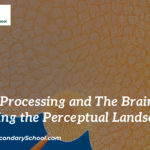Fertilization and Development
In the grand tapestry of life, the journey from a single cell to a complex, thriving organism is a symphony of events guided by the processes of fertilization and development. These remarkable phenomena mark the inception of a new life, orchestrating the fusion of genetic material and the transformation of a fertilized egg into a fully-formed individual. This article delves into the awe-inspiring world of fertilization and development, unveiling the intricate steps that shape the miracle of life.
Fertilization: The Fusion of Life’s Blueprints
Fertilization is the intricate process by which male and female reproductive cells, or gametes, merge to form a single, genetically unique zygote. This momentous event occurs within the female reproductive tract and sets the stage for the journey of embryonic development.
- Egg Activation: After fertilization, the sperm’s entry into the egg triggers a series of biochemical reactions that prevent other sperm from entering. This is crucial to ensure the correct number of chromosomes in the zygote.
- Formation of the Zygote: The fusion of the sperm’s nucleus with the egg’s nucleus forms the zygote. This single-cell entity carries the combined genetic information from both parents, defining the blueprint for the individual’s traits and characteristics.
Embryonic Development: The Marvelous Journey Begins
Following fertilization, the zygote embarks on a transformative journey of embryonic development, characterized by a sequence of stages and milestones that lead to the formation of organs, tissues, and eventually a fully-formed organism.
- Cleavage: The zygote undergoes rapid divisions, known as cleavage, resulting in a cluster of smaller cells called blastomeres. Cleavage does not increase the overall size of the embryo but allows for increased surface area-to-volume ratio, aiding nutrient exchange.
- Blastulation: The blastomeres continue to divide and arrange themselves into a hollow sphere called the blastula. This sphere encloses a central fluid-filled cavity known as the blastocoel.
- Gastrulation: Gastrulation involves the inward folding of the blastula’s cells to create three primary germ layers: the ectoderm, endoderm, and mesoderm. These layers give rise to different tissues and organs.
- Organogenesis: During this phase, the three germ layers undergo intricate interactions that lead to the formation of specific organs and organ systems. This process establishes the foundation for the organism’s structure and function.
- Fetal Development: As development progresses, the embryo transitions into a fetus. During this period, growth continues, and organs refine their functions. The fetus is surrounded by the amniotic fluid within the amniotic sac, offering protection and a stable environment.
- Birth and Beyond: Following the completion of fetal development, the intricate dance of development culminates in the miraculous event of birth. From this point, the journey of growth and maturation continues, shaping the individual’s growth, learning, and experiences.
Nature’s Masterpiece: A Symphony of Complexity
Fertilization and development are a testament to the complexity and beauty of life’s processes. Every individual begins as a single cell, and through a sequence of intricate steps, transforms into a unique and multifaceted being. The choreography of development orchestrates the unfolding of genes, the emergence of tissues, and the construction of organs, resulting in the diverse array of life forms that grace our world.
Conclusion
Fertilization and development are the exquisite chapters in the story of life, encompassing the transformation of a simple zygote into a complex, sentient being. The journey from conception to birth is a testament to the power of nature’s mechanisms, the marvels of genetic inheritance, and the wondrous dance of cellular events that shape existence itself. As we contemplate the intricate ballet of fertilization and development, we gain a deeper appreciation for the intricate symphony of life’s creation.



